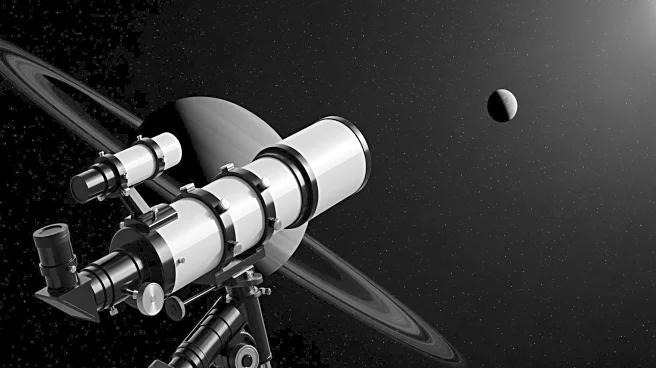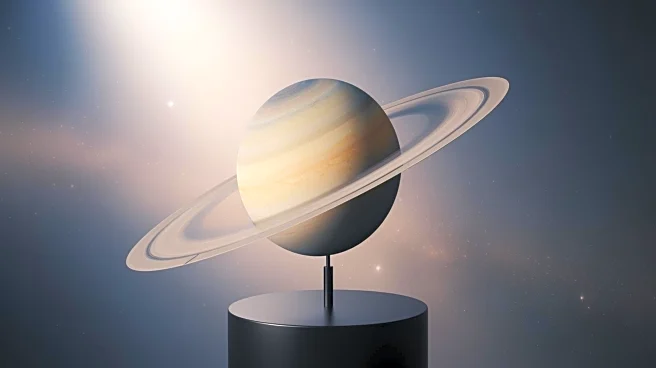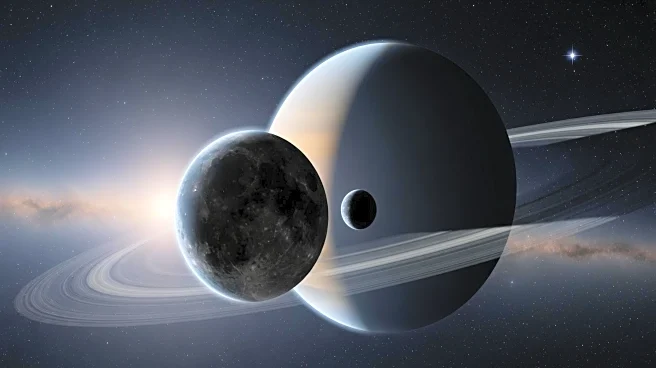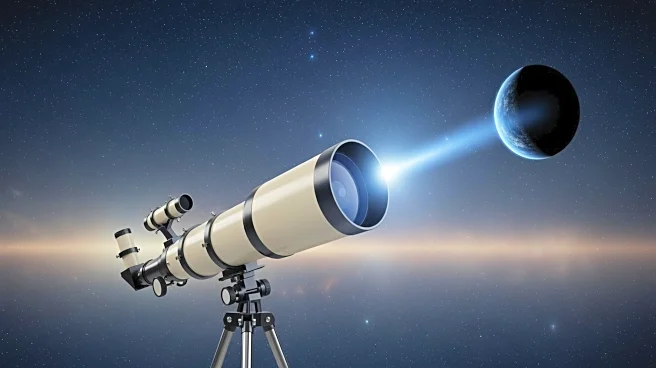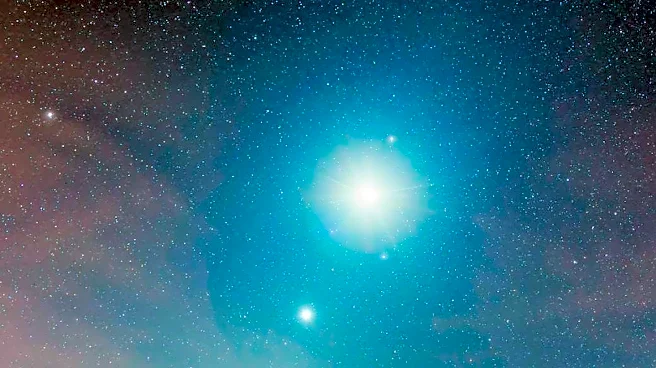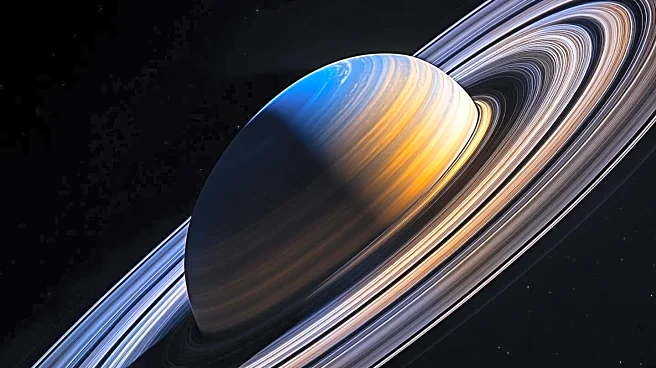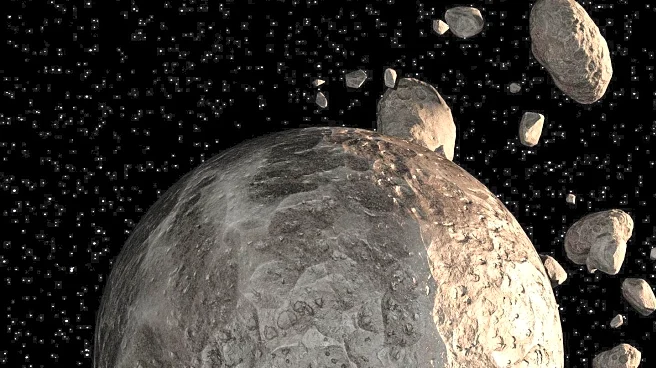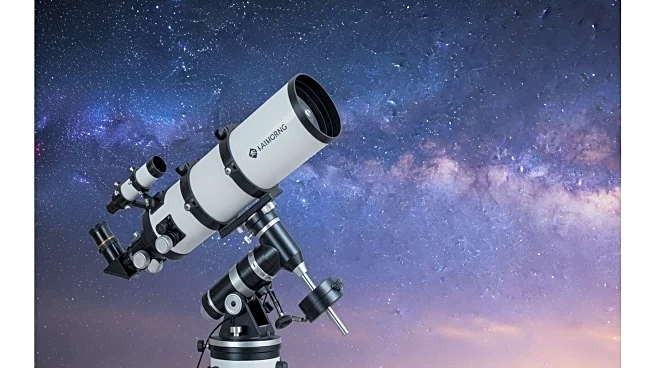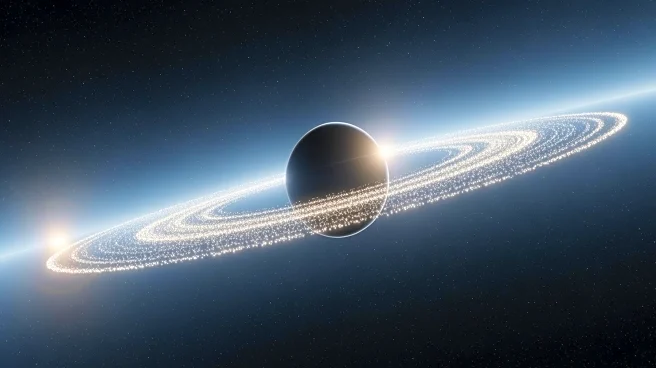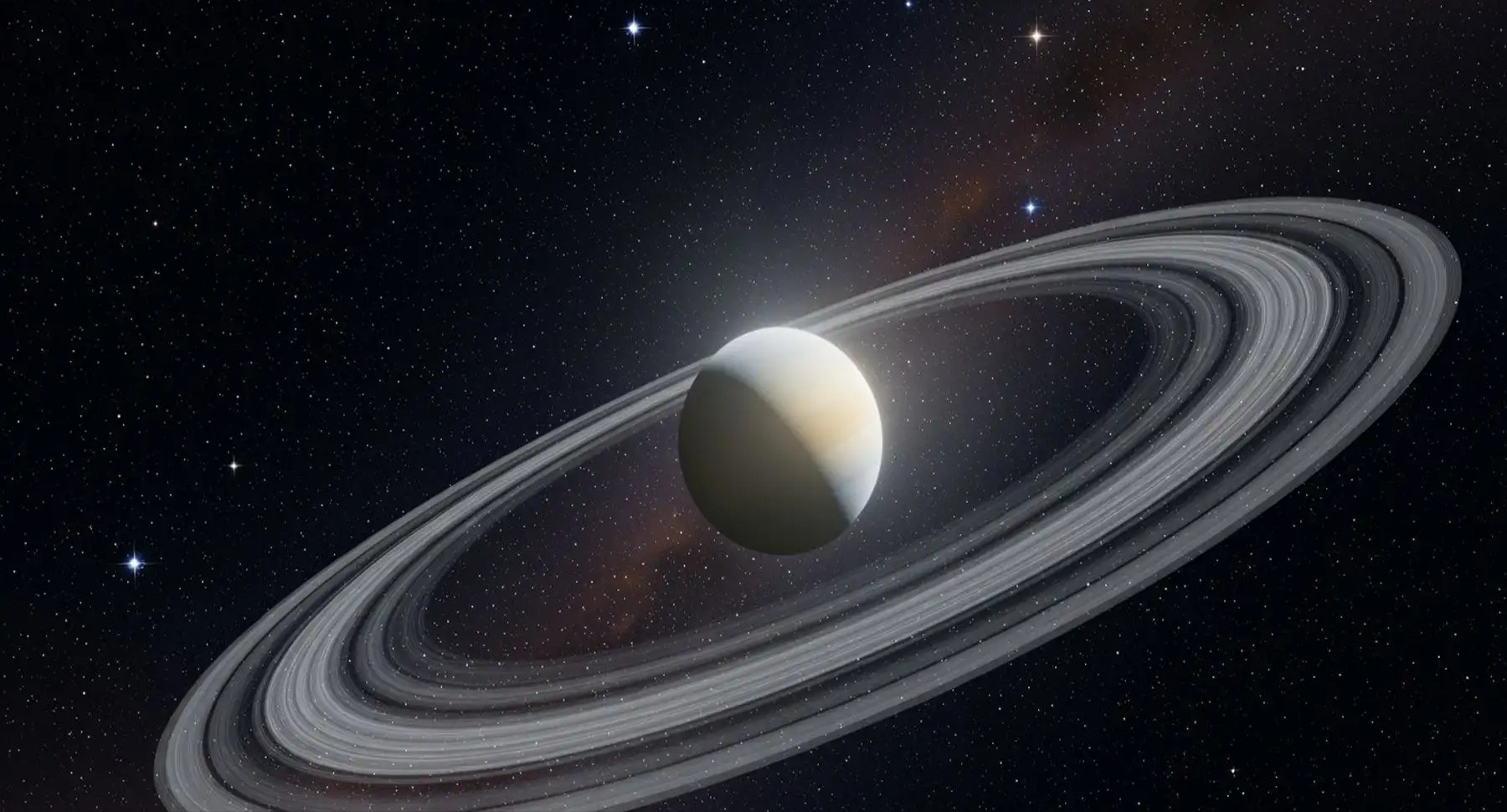What's Happening?
On October 25, Saturn's moon Iapetus reached inferior conjunction, positioned 1.3 arcminutes north of Saturn, making it easier to observe. Iapetus, now at 11th magnitude, is more visible near its parent
planet. Saturn itself is at magnitude 0.7 and presents a 43-inch wide ring system and a 19-inch disk when viewed through a telescope. Other moons such as Titan, Dione, Tethys, and Rhea are also positioned around Saturn, providing a rich observational opportunity for astronomers.
Why It's Important?
The positioning of Iapetus offers a unique opportunity for astronomers to study one of Saturn's moons that is often difficult to observe due to its orbit. Observing Iapetus and other Saturnian moons can provide insights into their composition, behavior, and interaction with Saturn's rings. This event is significant for both amateur and professional astronomers, enhancing our understanding of the dynamics within Saturn's moon system.
What's Next?
Astronomers will continue to monitor the positions of Saturn's moons as they change throughout the night. Observations will focus on capturing detailed images and data on the moons' movements and interactions with Saturn's rings. This ongoing study will contribute to the broader understanding of planetary systems and the gravitational influences within them.
Beyond the Headlines
The observation of Saturn's moons, including Iapetus, highlights the importance of celestial events in advancing astronomical research. Such events provide opportunities to test and refine observational techniques and technologies. The study of these moons can also inform future missions to Saturn and its satellites, potentially revealing new aspects of planetary science.
